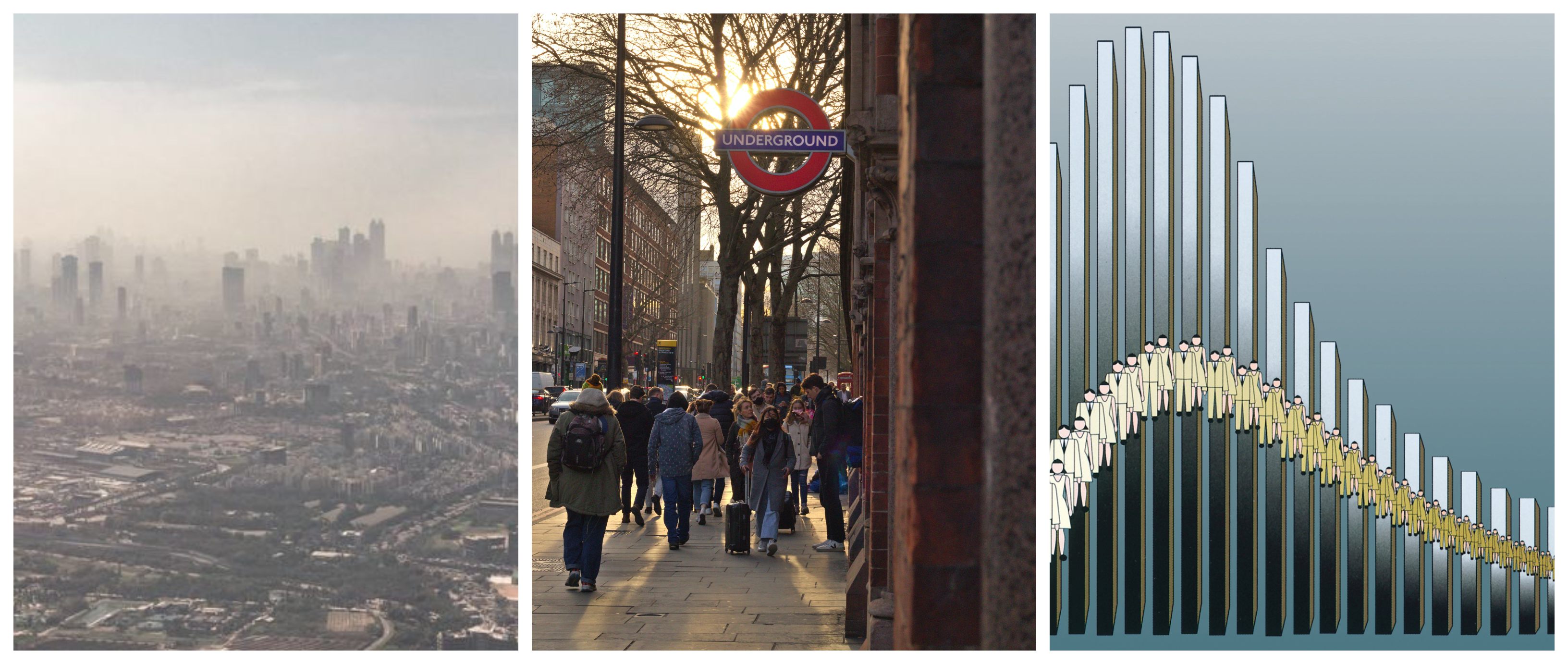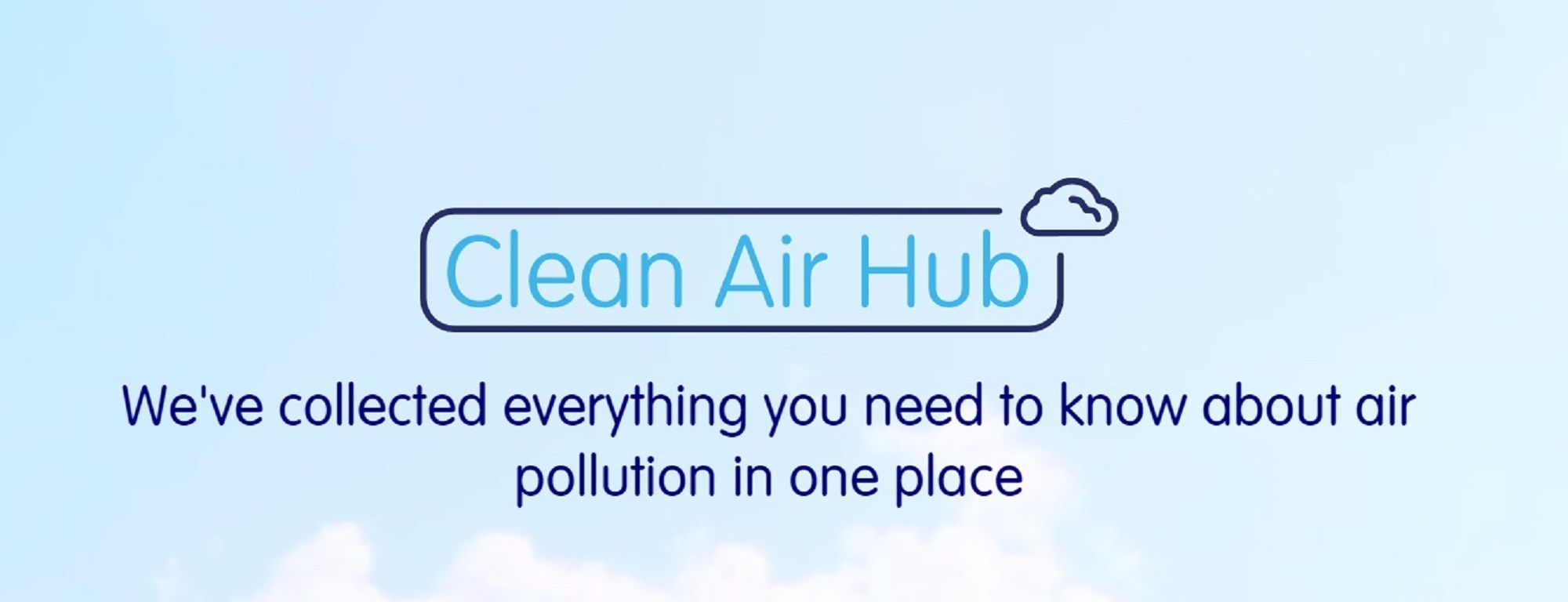
The existing consensus for the adverse health effects of air pollution relies to a large extent on results of epidemiological studies and was built through a difficult debate in the scientific literature and international fora. The Air Pollution Epidemiology Team started relatively recently, in July 2020, but incorporates members who have contributed substantially to the evidence on the associations between air pollution and health, as well as to policy inputs. The team focusses on studying air pollution and health. Since improving health is a motivation of ERG as a whole, our work encompasses contributions from other ERG teams by bringing in their data and expertise. There are several research teams in the UK and London working on environmental aspects of health, but this team focuses on air pollution epidemiology in a rather unique way. This includes a focus on methodological issues that impact interpretation of epidemiological studies and improving approaches to health impact assessment. While many of the team’s projects involve the effects of air pollution, other environmental factors, such as temperature, as well as interactive effects between environmental factors or between environmental and other factors (e.g. infections), are also covered.
Research
Members of the team have extensive experience in implementing large scale epidemiological studies and addressing methodological issues that are important for air pollution research, such as measurement error or the interpretation of epidemiological results for policy. Professor Klea Katsouyanni has led large collaborative internationally funded projects, such as the APHEA and APHENA projects, and participated in several others e.g. ESCAPE, ELAPSE, PHEWE, EUROHEAT, AIRGENE. More recently she was the PI of the concluded STEAM project, funded by the MRC Methodology Panel, and the ongoing MELONS project, funded by the US Health Effects Institute. The team has been involved in multiple health impact assessment projects, led by Dr Heather Walton, funded by various organisations, such as the Greater London Authority, Transport for London, Clean Air Fund, Defra and WHO. Other members of the team are: Dr Dimitris Evangelopoulos who is an MRC Centre for Environment and Health Research Fellow working on the identification of the impact of exposure measurement error on health effect estimation and Dr Dylan Wood, who is a Research Associate in the MELONS project and recently concluded his PhD project on the association of air pollution exposure and cognitive function in adults. The Air Pollution Epidemiology team is also contributing to the NIHR net zero project and the HORIZON2020 EXPANSE project. The team are also members of Theme II of the NIHR Health Protection Research Unit on Environmental Exposures and Health contributing work on air pollution and cognitive outcomes in the elderly and distinguishing the effects of short-term exposure to NO2 and PM2.5 (Dylan Wood); and a PhD studentships through the NIHR Health Protection Research Unit on Environmental Exposures and Health on a meta-analysis of air pollution and birth outcomes (Shawn Lee). The group also has a collaboration with the Exposure Science team in analysing the health data from the COPE project in COPD patients and is contributing to the Wellhome ERG project by leading a work-package (WP) and participating in other WPs.
Alongside work on assessing the health effects of air pollution in an epidemiological context, the team will further look to focus on methods development capitalizing on the unique datasets available in London. The team will also focus more on the interactions with other environmental factors, such as climatic variables and noise. Understanding interactions should help in developing methods to deal with combined risks in health impact assessment. The team will continue to work closely with expert committees such as the Committee on the Medical Effects of Air Pollutants (COMEAP).
Ongoing research projects
- The air quality health and economic costs and benefits of a zero carbon UK
- UKRI SPF Clean Air Programme – Clean Air Champion
- NIHR HPRU in Environment Exposures and Health
- Multi-Dimensional assessment of the Impact of Measurement Error on the health effect estimates of long-term exposure to air pollution (M-DIME)
- Improving diagnostics and therapeutics in never-smoker lung cancer patients
- MELONS - Investigating the consequences of measurement error of gradually more sophisticated long-term personal exposure models in assessing health effects
- Wellhome
- IONA- Assessing the impact of non-tailpipe emissions from traffic on the asthmatic airway
Recently completed projects
- Health impact assessment of current and past air pollution on asthma in London (Asthma report update)
- Pathway to WHO: Achieving clean air in the UK - Modelling air quality costs and benefits
- STEAM - Comparative Evaluation of Spatial-Temporal Exposure Assessment Methods For Estimating The Health Effects Of Air Pollution
- Investigating links between air pollution, COVID-19 and lower respiratory infectious diseases
- London Health Burden of Current Air Pollution And Future Health Benefits Of Mayoral Air Quality Policies
- NIHR HPRU on Health Impacts of Environmental Hazards
Masters projects
We also supervise summer projects for students on the Masters in Public Health and the MSc in Epidemiology. For example:
Education
The team currently delivers the Health Impact Assessment and Environmental Epidemiology module which are available for students pursuing the Master of Public Health and MSc Epidemiology. The team is also actively involved in teaching of iSTEMM modules under the themes Big data and biostatistics, Epidemiology, and Policy analysis, which are offered to all Imperial undergraduate students.
Accordion
Lee et al, Health impact assessment for air pollution in the presence of regional variation in effect sizes: The implications of using different meta-analytic approaches, Environ Pollut 2023 Aug 26:336:122465 doi: 10.1016/j.envpol.2023.122465
Cole-Hunter et al. Long-term air pollution exposure and Parkinson's disease mortality in a large pooled European cohort: An ELAPSE study. Environ Int 2023 Jan:171:107667. doi: 10.1016/j.envint.2022.107667
Stafoggia et al. Long-term exposure to low ambient air pollution concentrations and mortality among 28 million people: results from seven large European cohorts within the ELAPSE project. Lancet Plan Health 2022 Jan;6(1):e9-e18. doi: 10.1016/S2542-5196(21)00277-1
Wood et al. 2022. Exposure to Ambient Air Pollution and the Incidence of Dementia in the Elderly of England: The ELSA Cohort. International Journal of Environmental Research and Public Health 2022. 19(23), 15889; https://doi.org/10.3390/ijerph192315889
Evangelopoulos et al. Health impact assessment of current and past air pollution on asthma in London. 2021 Available at: https://www.imperial.ac.uk/school-public-health/environmental-research-group/research/air-pollution-epidemiology/air-pollution-and-asthma-in-london-2016-2019
Ashworth et al Spatio-temporal associations of air pollutant concentrations, GP respiratory consultations and respiratory inhaler prescriptions: a 5-year study of primary care in the borough of Lambeth, South London. Environ Health 2021 May 7;20(1):54. doi: 10.1186/s12940-021-00730-1
Evangelopoulos et al. Quantifying the short-term effects of air pollution on health in the presence of exposure measurement error: A simulation study of multi-pollutant model results. Environmental Health 2021, 20.1: 1-13. https://doi.org/10.1186/s12940-021-00757-4
Evangelopoulos et al. Personal exposure to air pollution and respiratory health of COPD patients in London. European Respiratory Journal 2021, 58(1). https://doi.org/10.1183/13993003.03432-2020
Butland et al. Comparing the performance of air pollution models for nitrogen dioxide and ozone in the context of a multilevel epidemiological analysis. Environ Epidemiol 2020 May 13;4(3):e093. doi: 10.1097/EE9.0000000000000093
Evangelopoulos et al. PM2.5 and NO2 exposure errors using proxy measures, including derived personal exposure from outdoor sources: A systematic review and meta-analysis. Environment International 2020, 137, 105500. https://doi.org/10.1016/j.envint.2020.105500
Evangelopoulos et al. The role of burden of disease assessment in tracking progress towards achieving WHO global air quality guidelines. International Journal of Public Health 2020, 65, 1455–1465. https://doi.org/10.1007/s00038-020-01479-z
Floyd et al. Acute Blood Pressure-Lowering Effects of Nitrogen Dioxide Exposure From Domestic Gas Cooking Via Elevation of Plasma Nitrite Concentration in Healthy Individuals. Circulation Research 2020. 127(6): 847-848
Samoli et al. Spatial variability in air pollution exposure in relation to socioeconomic indicators in nine European metropolitan areas: A study on environmental inequality. Environ Poll 2019 Jun;249:345-353. doi: 10.1016/j.envpol.2019.03.050
Karakatsani et al. Weekly Personal Ozone Exposure and Respiratory Health in a Panel of Greek Schoolchildren. Environ Health Perspect 2017Jul 21;125(7):077016. doi: 10.1289/EHP635
Heroux et al. Quantifying the health impacts of ambient air pollutants: recommendations of a WHO/Europe project. Int J Public Health 2015 Jul;60(5):619-27. doi: 10.1007/s00038-015-0690-y
Mills et al. Quantitative systematic review of the association between short-term exposure to nitrogen dioxide and mortality and hospital admissions. BMJ Open 2015. ;5:e006946. doi: 10.1136/bmjopen-2014-006946
Atkinson et al. Epidemiological time series studies of PM2.5 and daily mortality and hospital admissions: a systematic review and meta-analysis. Thorax 2014; 69:660-665
Beelen et al. Effects of long-term exposure to air pollution on natural-cause mortality: an analysis of 22 European cohorts within the multicentre ESCAPE project. Lancet 2014 Mar 1;383(9919):785-95. doi: 10.1016/S0140-6736(13)62158-3
Analitis et al. Effects of heat waves on mortality: effect modification and confounding by air pollutants. Epidemiology 2014 Jan;25(1):15-22. doi: 10.1097/EDE.0b013e31828ac01b
Raaschou-Nielsen et al. Air pollution and lung cancer incidence in 17 European cohorts: prospective analyses from the European Study of Cohorts for Air Pollution Effects (ESCAPE) Lancet Oncol 2013 Aug;14(9):813-22. doi: 10.1016/S1470-2045(13)70279-1
Evangelopoulos et al. Does climatic zone of birth modify the temperature-mortality association of London inhabitants? An analysis during the warm period 2004-2013. Environmental Research 2013, 110357. https://doi.org/10.1016/j.envres.2020.110357
Haralabidis et al. Can exposure to noise affect the 24 h blood pressure profile? Results from the HYENA study.J Epidemiol Comm Health 2011;65(6):535-41. doi: 10.1136/jech.2009.102954
Samoli et al. Acute effects of ambient particulate matter on mortality in Europe and North America: results from the APHENA study. Enviro Health Persepct 2008 Nov;116(11):1480-6. doi: 10.1289/ehp.11345
Gryparis et al. Acute effects of ozone on mortality from the "air pollution and health: a European approach" project. Am J Respir Crit Care Med 2004 Nov 15;170(10):1080-7. doi: 10.1164/rccm.200403-333OC
Katsouyanni et al. Confounding and effect modification in the short-term effects of ambient particles on total mortality: results from 29 European cities within the APHEA2 project. Epidemiology 2001 Sep;12(5):521-31. doi: 10.1097/00001648-200109000-00011
Katsouyanni et al, Short term effects of ambient sulphur dioxide and particulate matter on mortality in 12 European cities: results from time series data from the APHEA project. BMJ 1997 Jun 7;314(7095):1658-63. doi: 10.1136/bmj.314.7095.1658
Most of our research projects are published in journal articles, as listed above and in our personal profiles (see links after our names). Contract work is often published as reports, several of which are mentioned above. Links to older projects are given below.
- Understanding the health impacts of air pollution in London
- Department of Health Policy Research Programme Project: Systematic review and quantitative meta-analysis of the evidence for associations between chronic and short-term exposure to outdoor air pollutants and health(peer reviewed report)
- ASPIRE - Air pollution alert services evidence development strategy - Prediction of the possible effectiveness and assessment of intervention study feasibility.
Team members
Klea Katsouyanni
/prod01/channel_3/media/migration/faculty-of-medicine/klea-katsouyanni_1639647818170_x4.jpg)
Klea Katsouyanni
Professor of Public Health
Dr Dimitris Evangelopolos
/prod01/channel_3/media/migration/faculty-of-medicine/dimistris_1622479203065_x4.jpg)
Dr Dimitris Evangelopolos
Research Fellow
Gary Fuller
/prod01/channel_3/media/images/people-list/Gary-Fuller.jpg)
Gary Fuller
Senior Lecturer
Shawn Lee
/prod01/channel_3/media/migration/faculty-of-medicine/shawn-lee_1643801655356_x4.jpg)
Shawn Lee
Research Postgraduate
Heather Walton
/prod01/channel_3/media/migration/faculty-of-medicine/heather-walton_1627238407453_x4.jpg)
Heather Walton
Senior Lecturer in Environmental Health
Dylan Wood
/prod01/channel_3/media/migration/faculty-of-medicine/dylan-wood_1643801945412_x4.jpg)
Dylan Wood
Research Associate
Social media
Keep up to date by following us on our social channels
Twitter: ERGImperial | YouTube: Environmental Research Group


